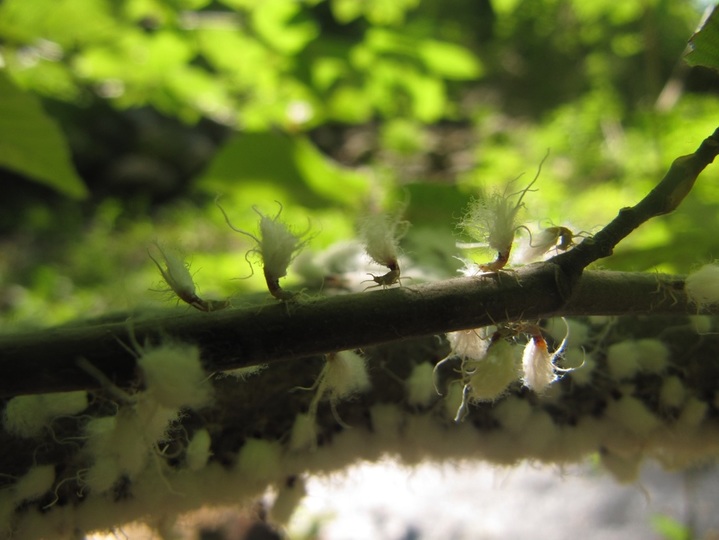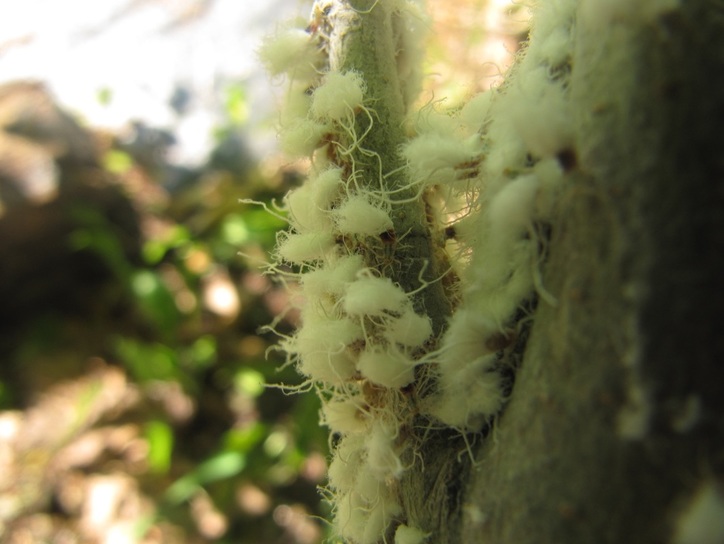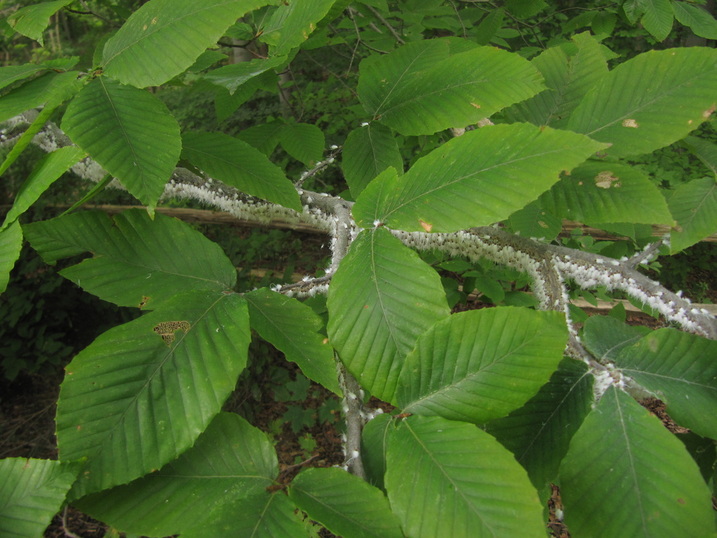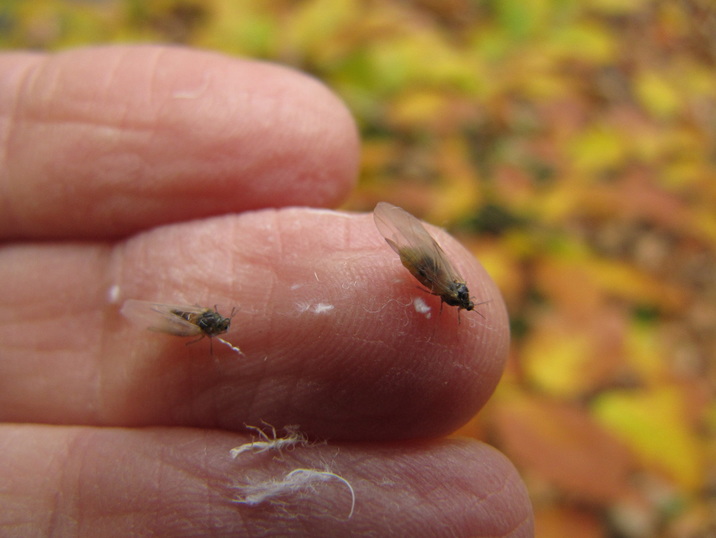Beech Blight Aphid (Boogie-Woogie Aphid), Grylloprociphilus imbricator
Watch the "Dancing" Beech Blight Aphid...
In late August 2011 I discovered this aphid (Grylloprociphilus imbricator) covering some of the branches of our American beech trees (Fagus grandifolia) in our biodiversity garden. The aphids are still there today (15 September), and are undoubtedly covering branches of many beech trees in the region. Two short videos below are from 27 August (the creaking sounds are made by my children on a nearby swing).
(21 seconds, N. Zitani)
(27 seconds, N. Zitani)
According to Robert D. Childs the beech blight aphid is sometimes referred to as the Boogie-Woogie aphid. Read an excellent introduction to this insect by Childs:
UMass Extension, beech blight aphid.
(photos late August 2011, N. Zitani)
Boogie-Woogie Aphid Adults, Fall 2011
Several days ago I decided to check and see if anything was happening with the boogie-woogie aphids on our beech trees. I found that most of them had matured to the adult stage.
On October 25th I discovered that most of the aphids had matured to the adult stage. The adults are the winged forms, and the nymphs, with the cottony material on their backs, are the immature forms of the aphid. In the two short videos below you can see the adults and nymphs walking around on my hands. It was cold (and raining) hence the slow movements of the insects.




